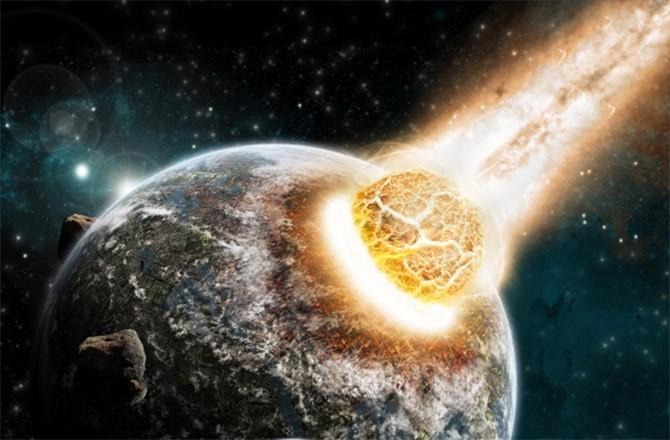Our Earth and Baby Earth smashed out the moon
A paper has been published this week which suggests that our moon was created when a tiny Earth collided with our much larger Earth millions of years ago. Millions and millions of years ago, that'll be, so says a paper by the name of "A primordial origin for the compositional similarity between the Earth and the Moon." Did you know that our Moon is made of the same basic material as our planet Earth? Popular theory suggests that our Moon was once part of our Earth, and this newest study suggests that it was bashed out by a sort of "Baby Earth."
Don't expect that there was a chance that a Baby Earth could have ever supported human life. Just because this Baby Earth was made of the same basic stuff as our Earth is now, doesn't mean it was a Krypton sort of situation where life existed until the end of the planet's reign.
Instead, this sort of impact would have happened well before dinosaurs and WELL before humans. Anything that could have been alive would have been alive in a way well different from what we understand today.
They're calling this theoretic Baby Earth "Theia", and they suggest that it would have had a slightly different isotopic makeup than Earth – one that would match our Moon.

"Here we track the feeding zones of growing planets in a suite of simulations of planetary accretion, to measure the composition of Moon-forming impactors," says the study's outline. "We find that different planets formed in the same simulation have distinct compositions, but the compositions of giant impactors are statistically more similar to the planets they impact."
"A large fraction of planet–impactor pairs have almost identical compositions. Thus, the similarity in composition between the Earth and Moon could be a natural consequence of a late giant impact."
Information in this article comes from the paper "A primordial origin for the compositional similarity between the Earth and the Moon" by Alessandra Mastrobuono-Battisti, Hagai B. Perets, and Sean N. Raymond, published in Nature 520, 212–215 (09 April 2015) doi:10.1038/nature14333 – Received 10 November 2014, Accepted 10 February 2015.
BONUS: Here's the 1999 music video for the song "When Worlds Collide" by Powerman 5000. Enjoy.
